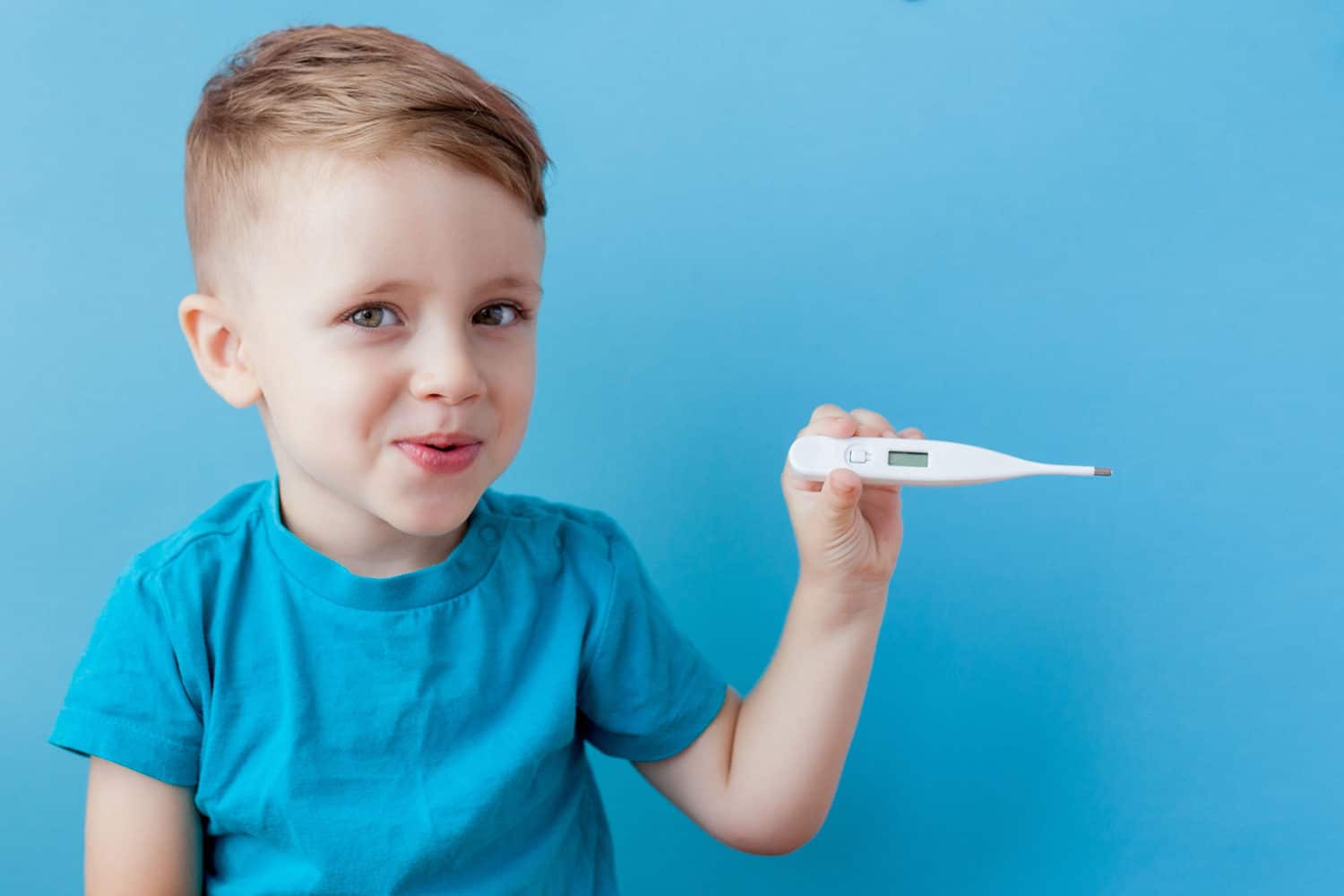Fever In Children
One of the most common concerns we see in our clinic is for the febrile child. Most children will get a fever in response to an illness, and fortunately, most fevers are not harmful. In fact, it’s a sign that the body is working! A specific part of the brain is responsible for regulating the temperature of our bodies at around 98.6℉ or 37°C. When the brain senses a change requiring a change in body temperature, it will raise the normal temperature to help fight off an infection. A true fever is considered any temperature above 100.4℉ or 38°C.
Except in newborns less than a month old, most fevers can be cared for at home. If a baby is less than one month of age and has a fever measured rectally, they should be taken to an emergency room immediately as it could be a sign of a severe infection. However, for older infants and children, treatment with over-the-counter medications like acetaminophen (Tylenol) or ibuprofen (Motrin or Advil) along with plenty of fluids and rest, is sufficient. It is important to remember that treating the fever will not treat the underlying illness, but it will help the child feel and sleep better until the illness passes.
If the child is otherwise acting normally (wanting to play, able to drink water, urinating normally), it is safe to keep them at home and rest. Once the fever persists longer than 5 days above 102℉ or 38.8°C, the child should be evaluated by a physician for a possible bacterial infection. It is important to note that a higher temperature does not necessarily mean a worse or more severe infection. What we like to see and hear in the clinic is that the child is well-hydrated and wants to play!







